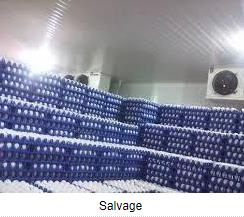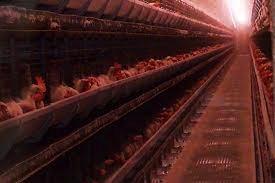 In one of the worst academic-conceived initiatives, University of Minnesota scientists are “exploring options for moving ‘uninfected eggs’ from farms where highly pathogenic avian influenza (HPAI)has been diagnosed and making them available to consumers”.
In one of the worst academic-conceived initiatives, University of Minnesota scientists are “exploring options for moving ‘uninfected eggs’ from farms where highly pathogenic avian influenza (HPAI)has been diagnosed and making them available to consumers”.
In the first instance, highly pathogenic avian influenza results in a precipitous drop in egg production so only a small volume of eggs will be available after the disease presents clinically and is then identified and rapidly diagnosed.
If the public learns that even a small quantity of eggs was released for sale from a known infected farm, the entire shell egg industry would be impacted. This is the age of rapid dissemination of bad news on the internet. In addition, mainstream media and the ever-present opponents of intensive livestock and egg production would have a field day with accusations and negative publicity.
 Egg consumption in many nations where HPAI outbreaks have occurred has resulted in a sharp decline in consumption mainly based on fear mongering. The large-scale outbreak of SE in 2010 associated with the Iowa farm operated by the DeCoster family resulting in an extensive recall and consumer concern with a degradation of the image of eggs as a safe and nutritious food. The decline in egg price moving into late fall was estimated to have cost the U.S. industry as much as $100 million based on the difference between anticipated and realized unit prices. The University of Minnesota scientists who are evaluating “various pathways that could lead to HPAI virus contaminating washed and sanitized eggs that have been segregated and safely stored on site” should confine their endeavors to an academic exercise.
Egg consumption in many nations where HPAI outbreaks have occurred has resulted in a sharp decline in consumption mainly based on fear mongering. The large-scale outbreak of SE in 2010 associated with the Iowa farm operated by the DeCoster family resulting in an extensive recall and consumer concern with a degradation of the image of eggs as a safe and nutritious food. The decline in egg price moving into late fall was estimated to have cost the U.S. industry as much as $100 million based on the difference between anticipated and realized unit prices. The University of Minnesota scientists who are evaluating “various pathways that could lead to HPAI virus contaminating washed and sanitized eggs that have been segregated and safely stored on site” should confine their endeavors to an academic exercise.
Breaking and pasteurizing eggs collected from flocks during the preclinical incubation phase of avian influenza would not represent a risk to consumers but handling and transport especially to a breaking plant operated in a hybrid in-line and off-line program would represent a danger to the flock associated with the breaking plant. Given that many of the hybrid plants have flocks of up to 4 million hens, the consequences of introducing infection far outweigh the possible reclamation value of eggs transferred from a known positive complex.
Irrespective of the scientific realities of rates of transfer of avian influenza virus to eggs and the risks and probabilities associated with lateral infection, the negative response of consumers will be the major obstacle to any salvage program other than breaking and pasteurization on site.
Knowingly distributing eggs from a complex infected with HPAI is a bad, bad, bad idea.